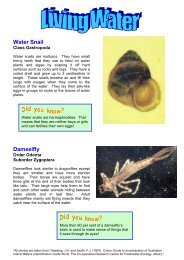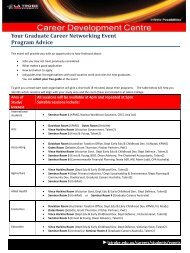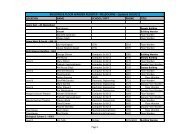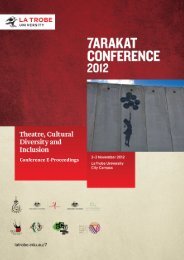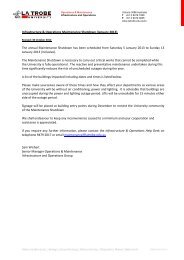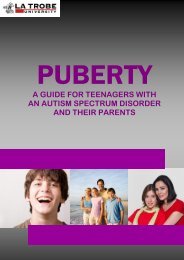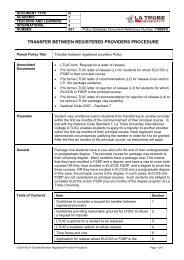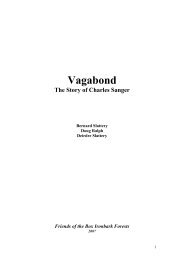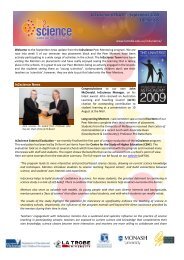Project Report - La Trobe University
Project Report - La Trobe University
Project Report - La Trobe University
Create successful ePaper yourself
Turn your PDF publications into a flip-book with our unique Google optimized e-Paper software.
Apalis (Ombin) Abaggoy reviews yet another English<br />
version of a story while his son Ayfa (Edmar) Abaggoy<br />
sits in his lap.<br />
Indigenizing Education in a Kalinga Public School | 24<br />
application was not successful, or without the<br />
input of professional artists, for example). This<br />
approach meant that we could easily adapt to<br />
changing circumstances and unexpected challenges<br />
(like when Edwin returned to Australia for almost<br />
a month in response to a medical emergency). It<br />
also meant that we could easily take all<br />
opportunities as they arose, like the chance to<br />
incorporate the work of the Ang Ilustrador ng<br />
Kabataan illustrators.<br />
…except time<br />
The only parameter which we didn’t treat flexibly<br />
was the project timeframe: we were adamant that<br />
we must complete the project within five months.<br />
This was useful in that it forced us to produce<br />
something fast without the luxury of stretching the<br />
timeline out indefinitely: we needed to produce<br />
something tangible before we left Chananaw when<br />
the five months was up.<br />
The right people for the job<br />
In terms of us as the two individuals driving the<br />
project, two characteristics probably contributed a<br />
lot to its success. First, the fact that we are a couple<br />
meant that we knew each other well, enjoyed<br />
working together and could provide a lot of<br />
support to each other in a way impossible if we<br />
weren’t already so close, to the point of taking over<br />
from each other when needed. In terms of being<br />
foreigners, the fact that we’d lived in the<br />
Philippines for a year before commencing the<br />
project meant that we didn’t have any cultural<br />
adjustment issues and we already had strong social<br />
and professional networks to draw on.<br />
Genuine partnerships, not charity<br />
We focused on only building genuine working<br />
partnerships. We weren’t seeking charitable<br />
support for the Ichananaw – not least since we<br />
consider them a resourceful, capable community<br />
with the ability to solve their own problems<br />
without the need for charity. Genuine partnerships,<br />
however, where each side contributed and each<br />
gained something from the interaction, were the<br />
vehicle we used to achieve those aspects of our<br />
project which we couldn’t achieve alone. This was<br />
important, in our eyes, to maintain the dignity of<br />
the Ichananaw as the official project beneficiary.<br />
But it also meant that, even though most of the<br />
contributions to our project were volunteered, all<br />
involved were serious and committed and<br />
produced work of a high quality.


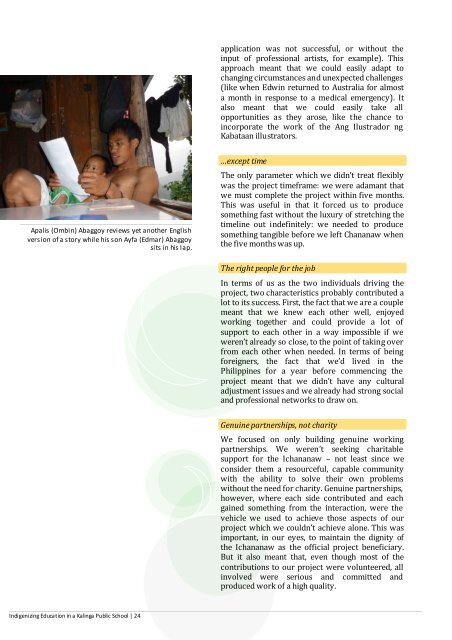
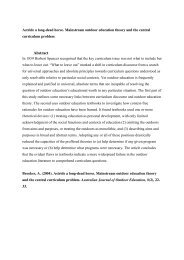
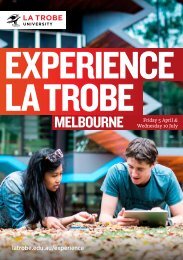
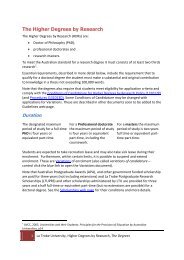
![Ottoman Empire course brochure [PDF 612KB] - La Trobe University](https://img.yumpu.com/12001562/1/184x260/ottoman-empire-course-brochure-pdf-612kb-la-trobe-university.jpg?quality=85)
![Getting Ready to Talk Manual [PDF 315KB] - La Trobe University](https://img.yumpu.com/11430807/1/190x245/getting-ready-to-talk-manual-pdf-315kb-la-trobe-university.jpg?quality=85)
